Succulent garden ideas: 14 looks for a stylish outdoor oasis
For drought tolerant, low maintenance displays, our succulent garden ideas are hard to beat
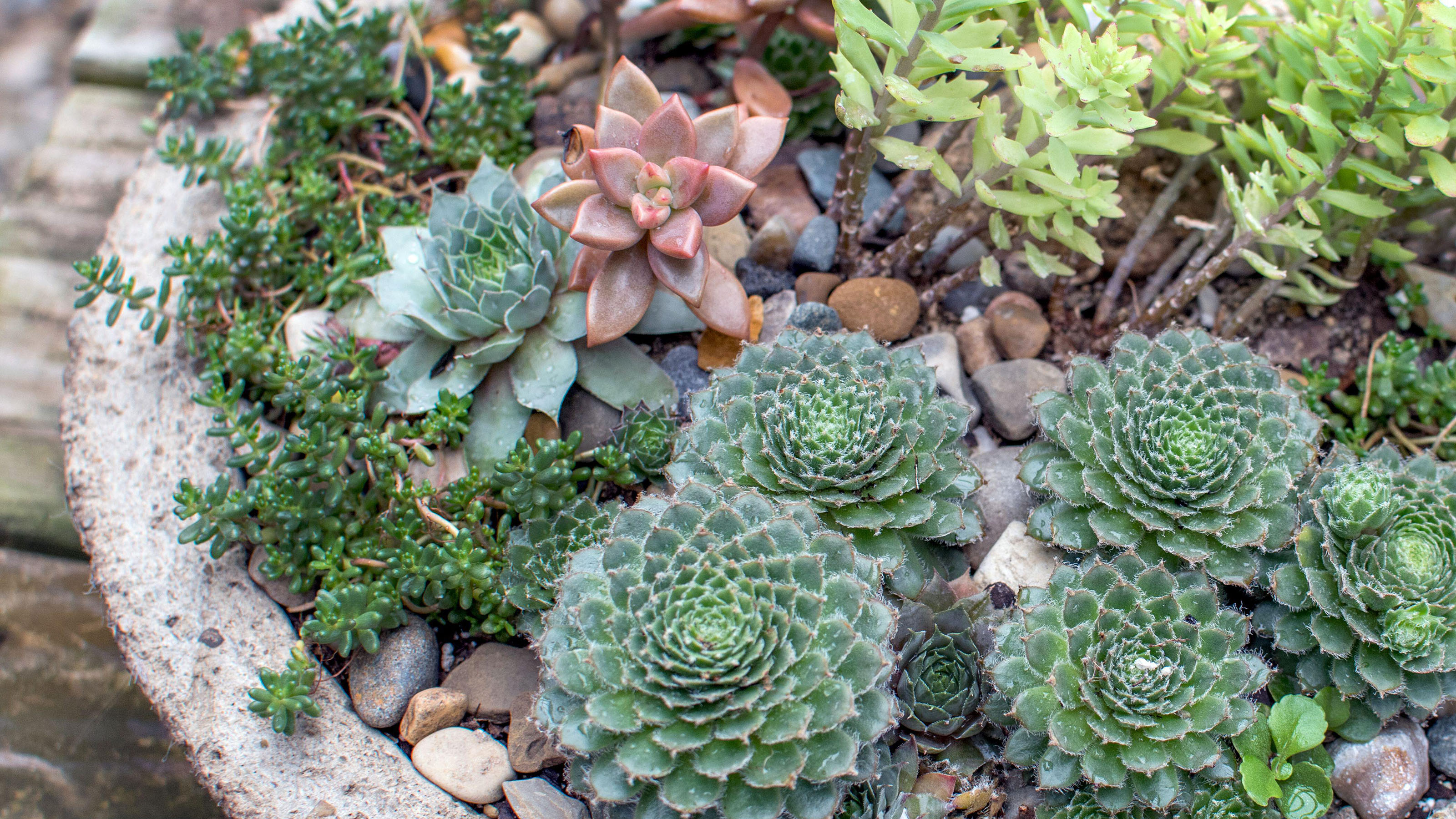

Aside from the range of colors, shapes and textures available in succulent garden ideas, succulents are extremely well suited to survival in many conditions. They have adapted their structures to hold on to water so they can survive in inhospitable dry conditions and extreme heat.
The diversity of color and form is fascinating, including the likes of aloes, houseleeks and agaves. Most succulents use their fleshy leaves to store water, but some also use their stems and roots, and the leaves tend to be thick and waxy to reduce evaporation. This makes them ideally suited to hot, dry climates and as part of a drought tolerant garden scheme.
Make succulents part of your tropical garden ideas, particularly if you live in hotter parts of the US and Australia. You should be able to grow these plants outdoors in these areas with few problems. Even the more tender succulents, such as sansevieria and crassula. In the UK these will be perfect as indoor succulent gardens.
Then there are those that are borderline hardy, like Aloe striata. If your garden is frost-free you should be able to grow these outdoors all year round. But don’t worry if this isn’t the case, says Louise Curley expert at Amateur Gardening. 'Lots of succulents, such as houseleeks and sedums, are completely hardy. Excess water can be a problem, so you’ll need to improve drainage by adding plenty of grit or gravel. Alternatively, grow in pots so you can move them under cover in winter.'
So not matter where you live, there's a way to incorporate some on-trend succulent garden ideas in your space.
Bring in bold textures with stylish succulent garden ideas
Succulents are some of the best drought-tolerant plants and are available in a multitude of colors and shapes. They will thrive in hot sunshine, but you can also use them indoors as a houseplant in colder regions. Our favorite succulent garden ideas are perfect for creating a modern look in spaces big or small.
1. Combine succulents with cacti for color and texture
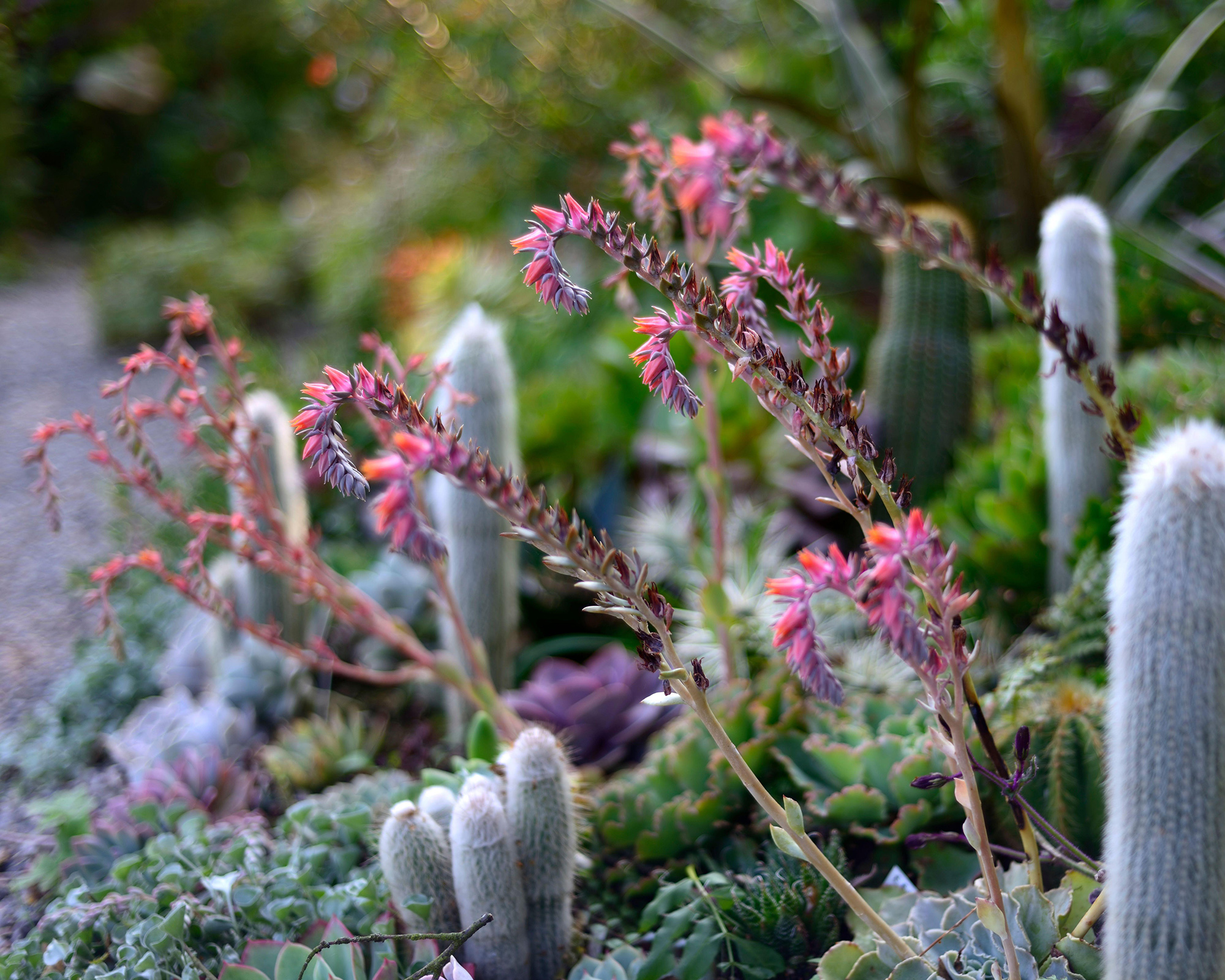
Cacti make ideal bedfellows with succulents given that they hail from similar climates. And technically all cacti are in fact succulents. But not all succulents are cacti: a cactus is merely a succulent with spines.
Combine succulents with your cactus garden ideas using varieties like Cephalocereus senilis (old man cactus). It's great for adding height whilst the low growing succulents will make good ground cover.
There are no set rules when it comes to choosing your plants and given their popularity there will be lots of different varieties, readily available. So just choose ones that you like best.
2. Give a nautical twist to your succulents
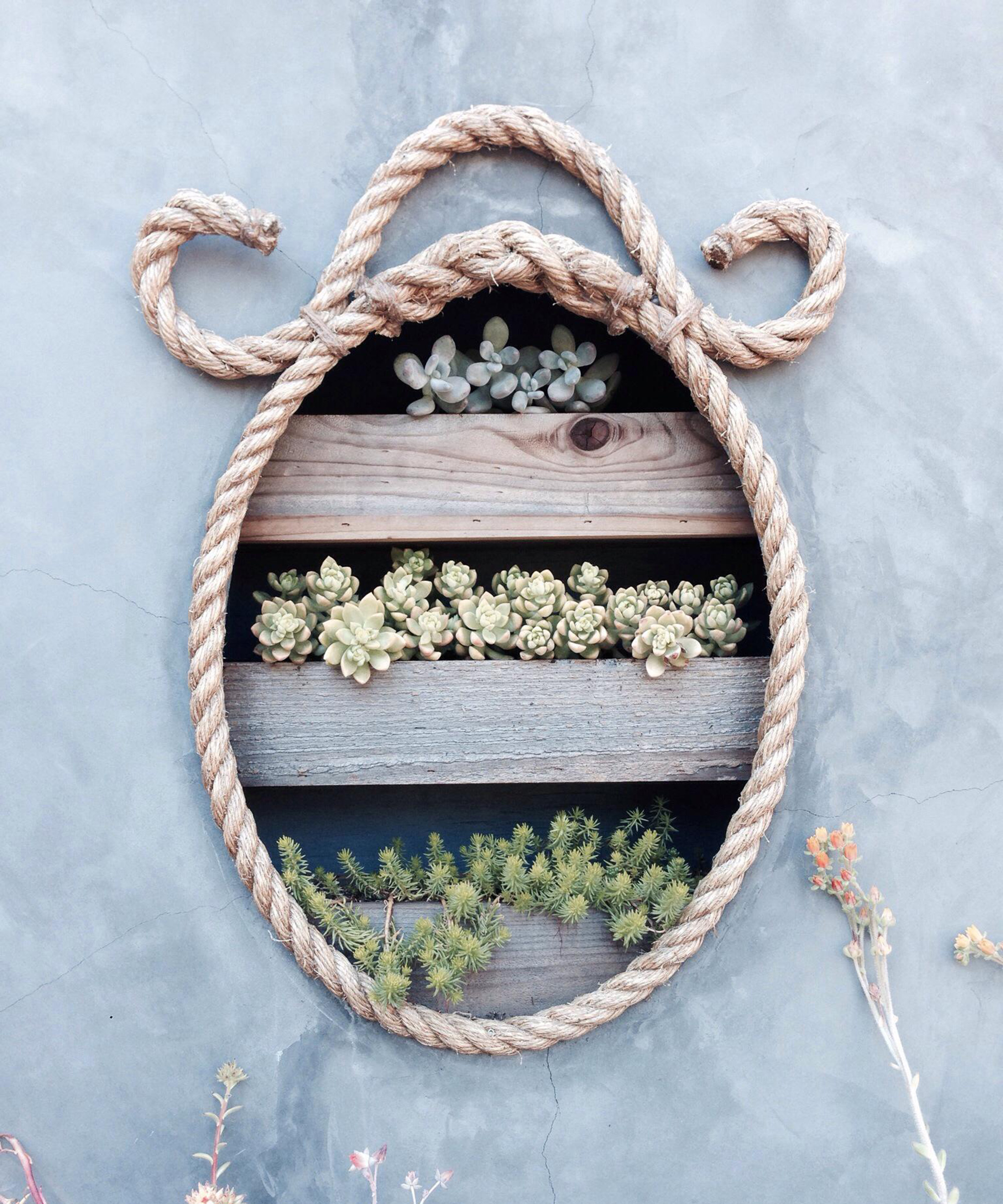
Succulents make great container plants, and can therefore be used to create vertical garden ideas. Perhaps you'd associate succulents as being one of the best tropical plants but they can take on other aesthetics too. This porthole-style planter has been given even more of a nautical twist with an additional decorative detail. Use a length of rope from a flea market to arrange around the edge of your wall display. Secure in place with Gorilla Glue from Amazon .
Ensure your plants are getting enough light and have adequate drainage. They will also benefit from room to trail and grow.
3. Fill in the cracks
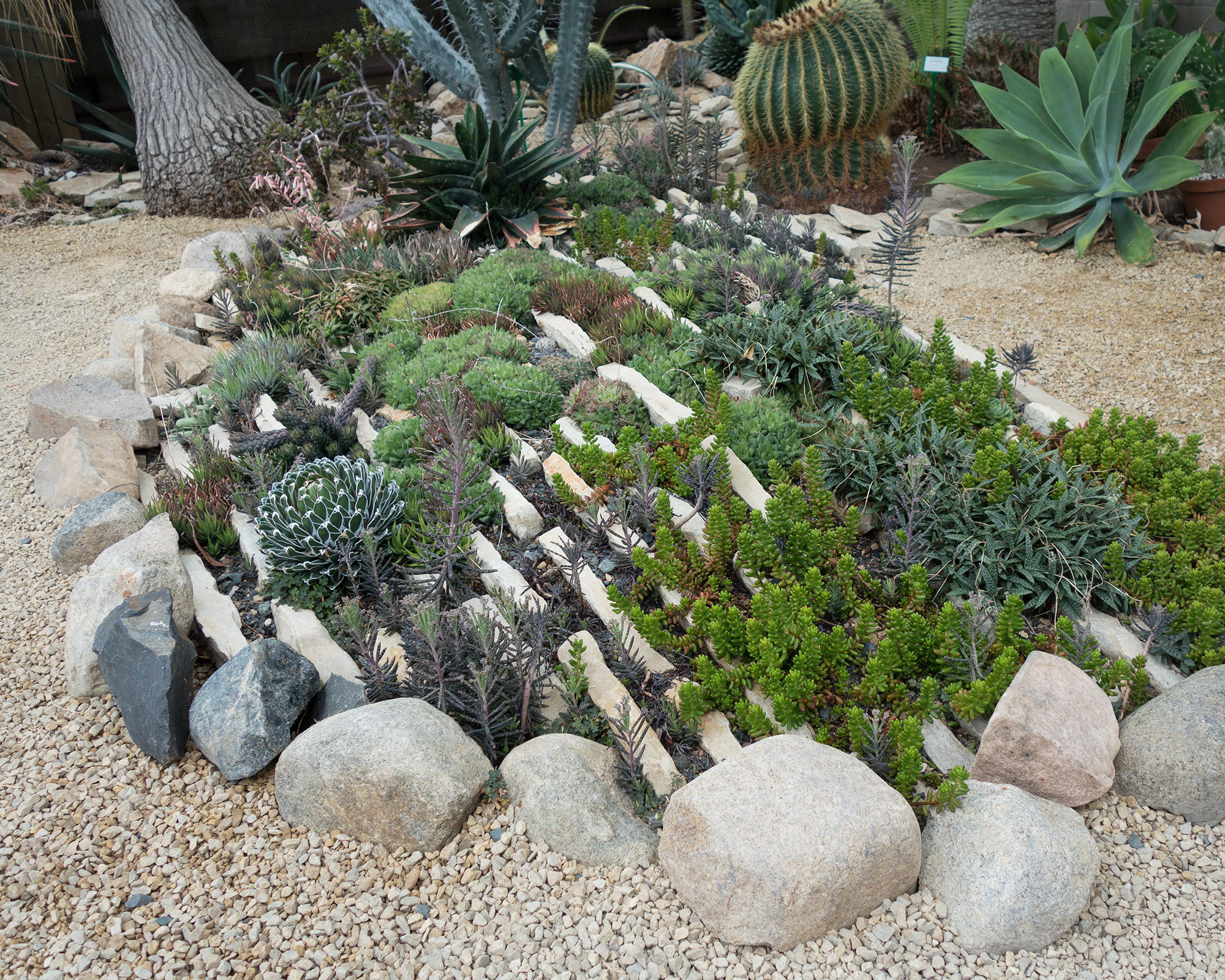
Use reclaimed stone slabs or tiles to section up your succulent garden ideas. As well as setting the plants off beautifully, a stony layer allows air to circulate beneath the rosettes, warding off rot, as well as preventing unsightly mud splash.
Inserting small rocks, pebbles or boulders in and around the plants also gives an attractive, naturalistic finish, and is ideal for small rock garden ideas. The stones must be firmly bedded in to avoid air pockets beneath where ants or woodlice could shelter. At least half the stone should be beneath the soil.
4. Display in rustic containers
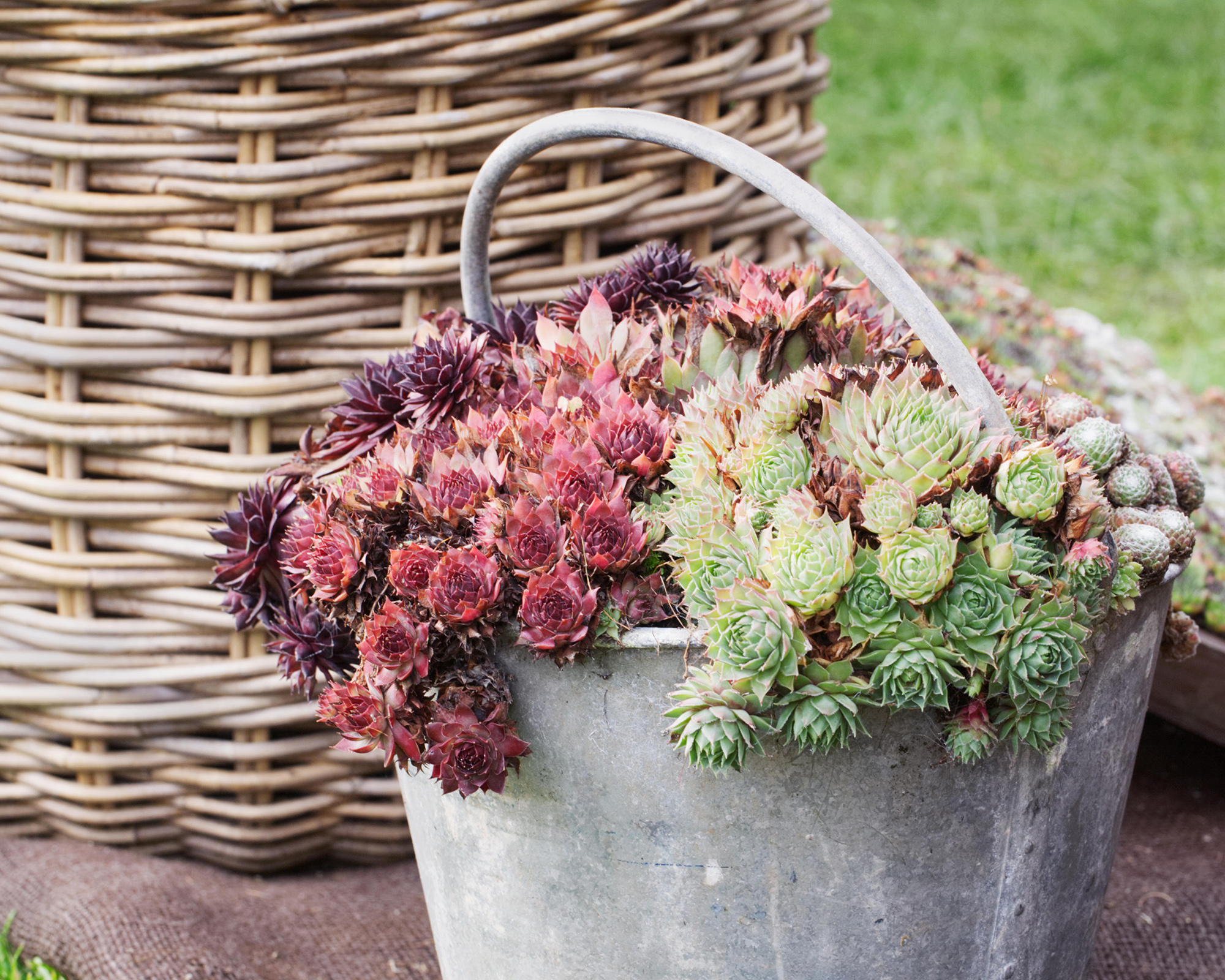
Succulents can grow very well as part of your container gardening ideas. Given their small root systems, shallow vessels like old trays and dishes can be upcycled and used to grow them. Just be sure to drill drainage holes in the base or the roots will become waterlogged and quickly kill the plants.
A layer of gravel on the base will also help aid drainage as well as a specially formulated potting mix which contains horticultural grit. You can add some fine gravel to the top of the soil too to hide unsightly bare patches of soil.
5. Grow on a wall for vertical interest
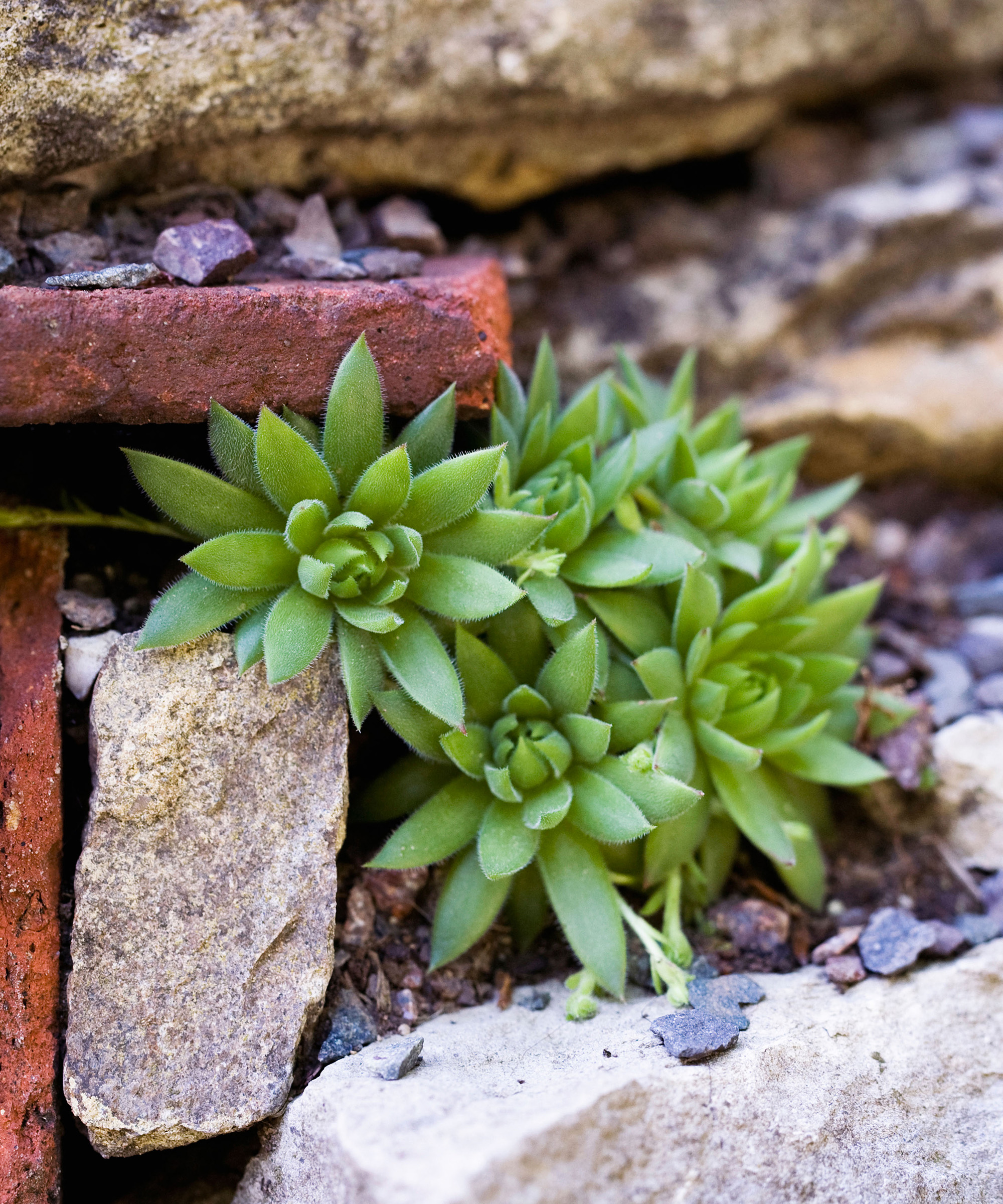
Here's a great garden wall idea which can be achieved using succulents. Cracks in stone walls can present an ideal opportunity to slot in a succulent. The cracks must be large enough for the roots to fit in. It's because of their tolerance to drought that makes succulents like Echeveria a good choice for succulent garden ideas like these.
If you have a large, healthy plant then you can take cuttings from plants to place in the planting pockets of your wall. Watch and wait to see if they take root and keep adding more over time.
6. Go bold with blue agave
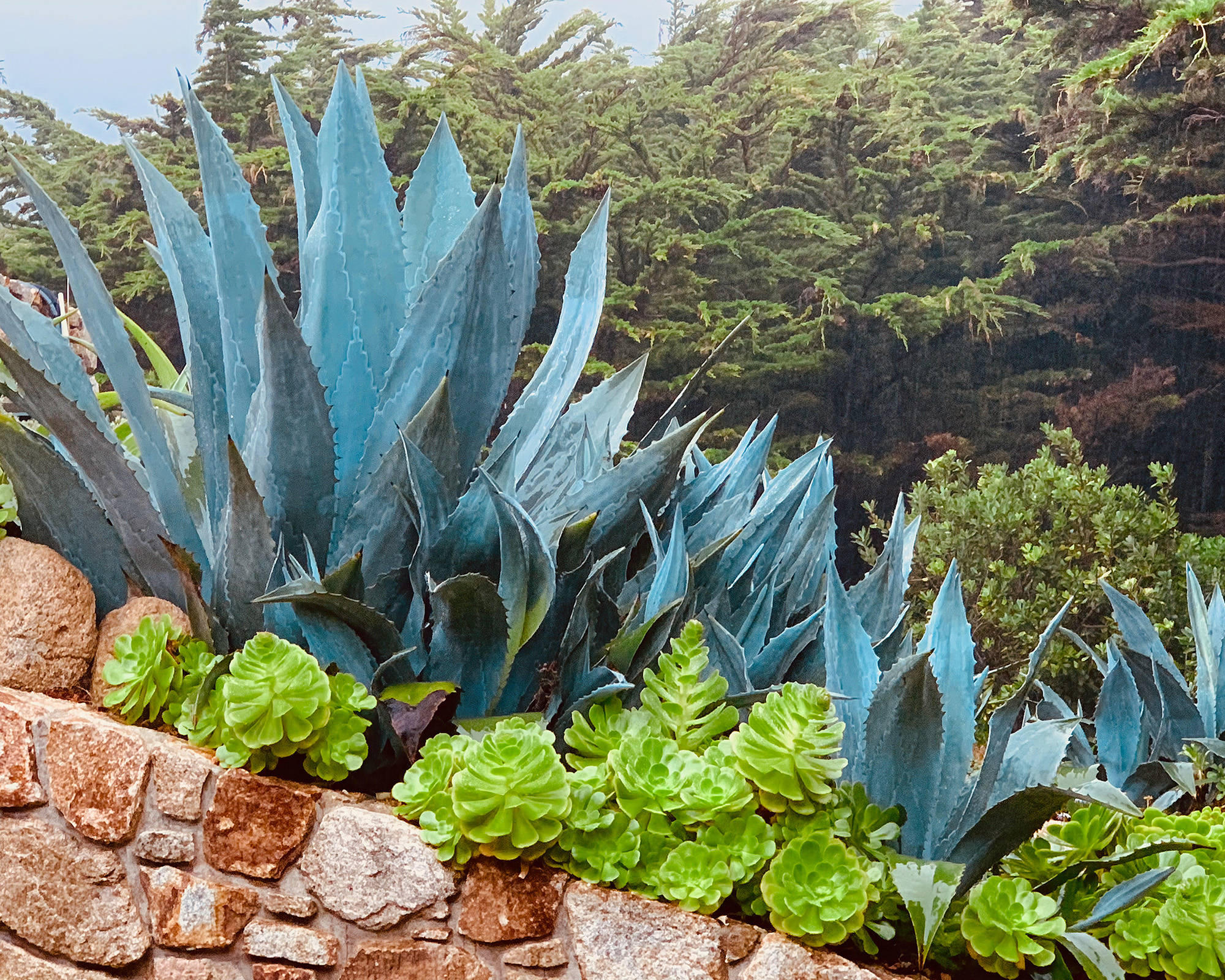
Succulents come in many unique colors, from pastel pinks to acid greens. A particularly show stopping variety is the Agave Tequilana or blue agave, which is an essential component in Tequila production.
But as a plant its unique color will produce eye catching displays, particularly when fully grown as its spears can be over 3ft long. Like most succulents they like well drained soil and it's important to water any new plants weekly if you're thinking about how to grow succulents successfully. Do this until they establish in their positions.
7. Grow edible succulents
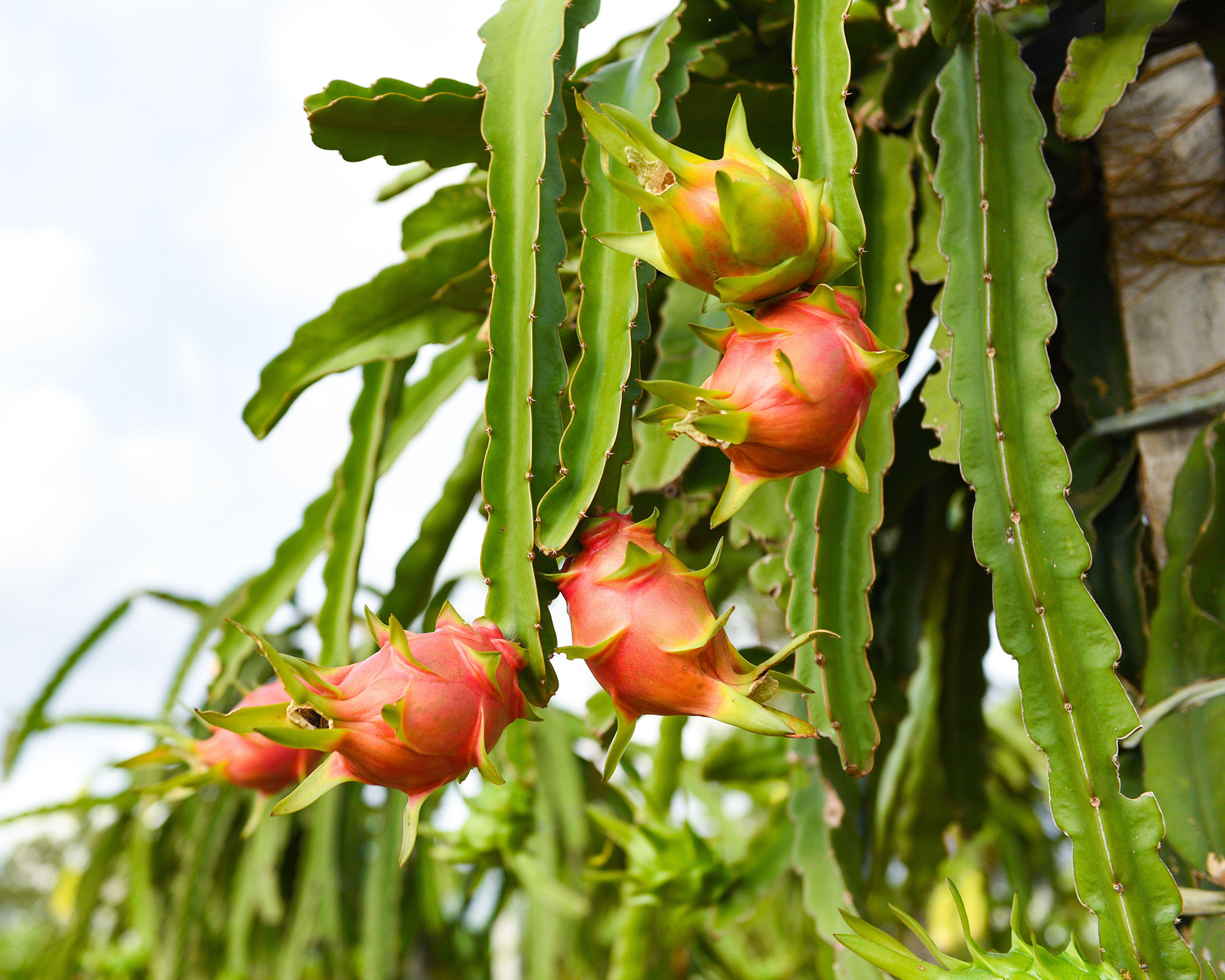
Did you know that some succulents are edible? You might recognise dragon fruit as an exotic looking fruit which tastes great in your morning smoothie but it is in fact a product of a succulent plant.
They will only survive in warm climates that have mild winters. They great thing is that you can take seeds directly from their flesh. Squash a segment onto a damp cloth and keep out of direct sunlight and you'll start to see the seeds sprout. Repot the strongest looking seedlings into their own pot of well draining compost. You can then go on to growing fruit in pots outdoors.
8. Eliminate the need for watering
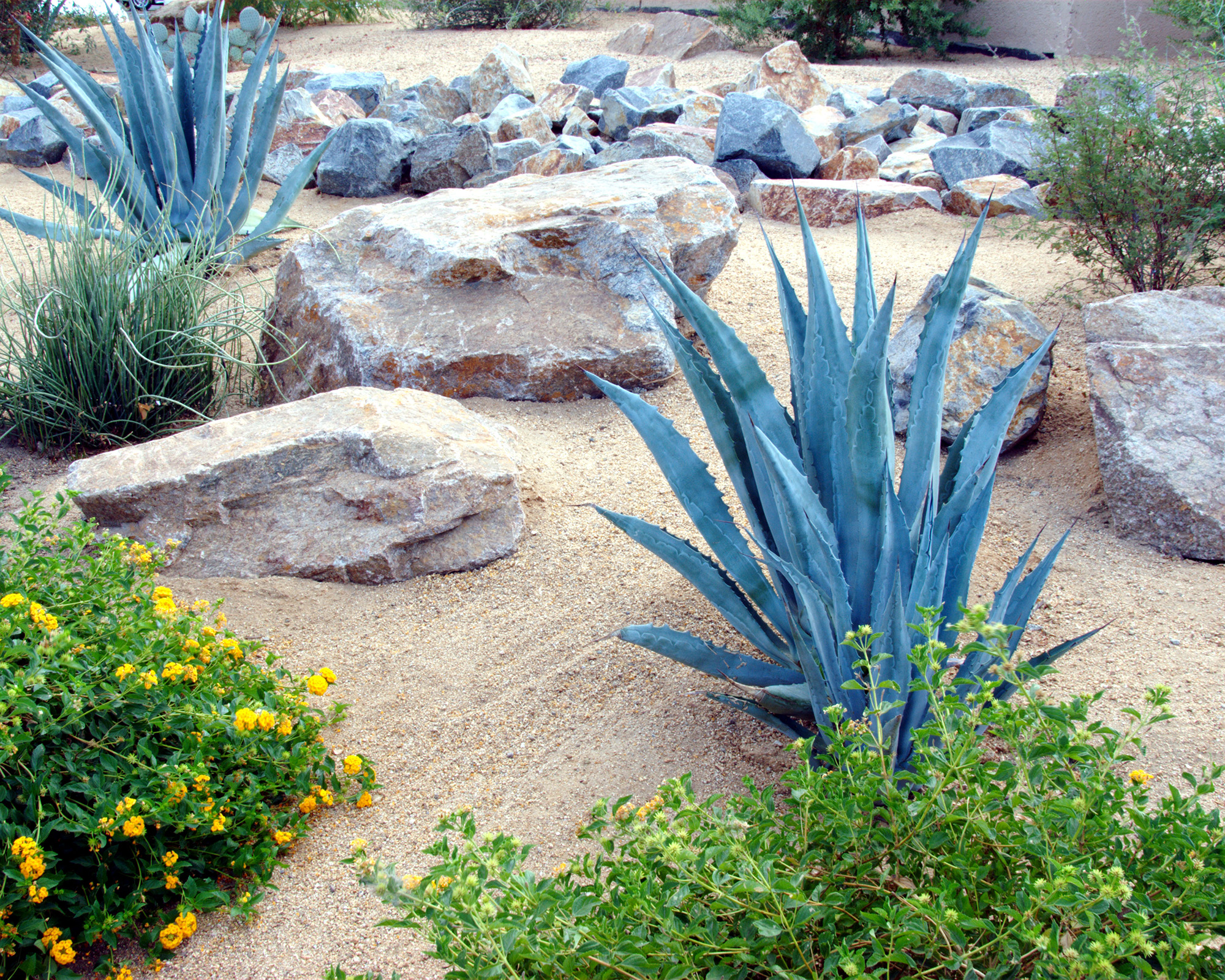
One of the cornerstones of a thriving ‘dry garden’ is well-tended soil. Dig in lots of organic matter (garden compost or a locally produced soil improver mix) prior to planting to ensure your soil has plenty of nutrients.
Compost breaks up dense dry soil (such as clay), airing it and allowing roots to move freely. It also adds bulk to different soil types such as dry, sandy soils, which prevents nutrients from being washed away.
The fleshier the leaves of your succulent, the more drought tolerant it will be, as this is where they store water. So make sure you select these types if you're planning on watering plants extremely infrequently.
9. Create a wellness moment with aloe vera
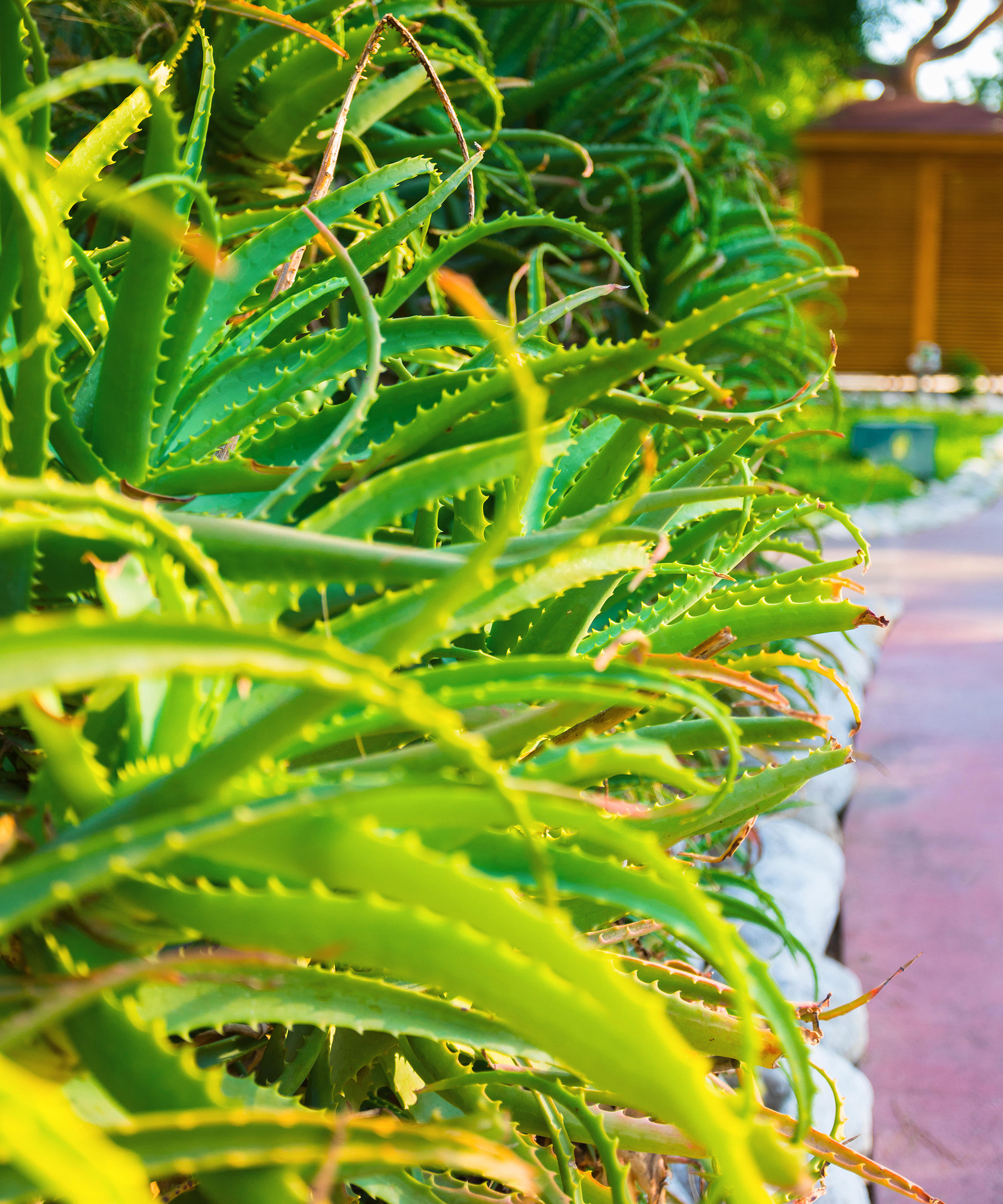
Noted for its healing properties, growing Aloe Vera can give your garden a wellness moment. Its pointy, fleshy leaves contain a gel-like sap which can be applied directly to the skin.
You will often see it as an ingredient in soothing ointments. Because of its natural cooling properties it is good idea to learn how to grow aloe vera so it can be used to soothe sunburn and heal minor wounds. It also goes great in a smoothie!
10. Get creative with a DIY project
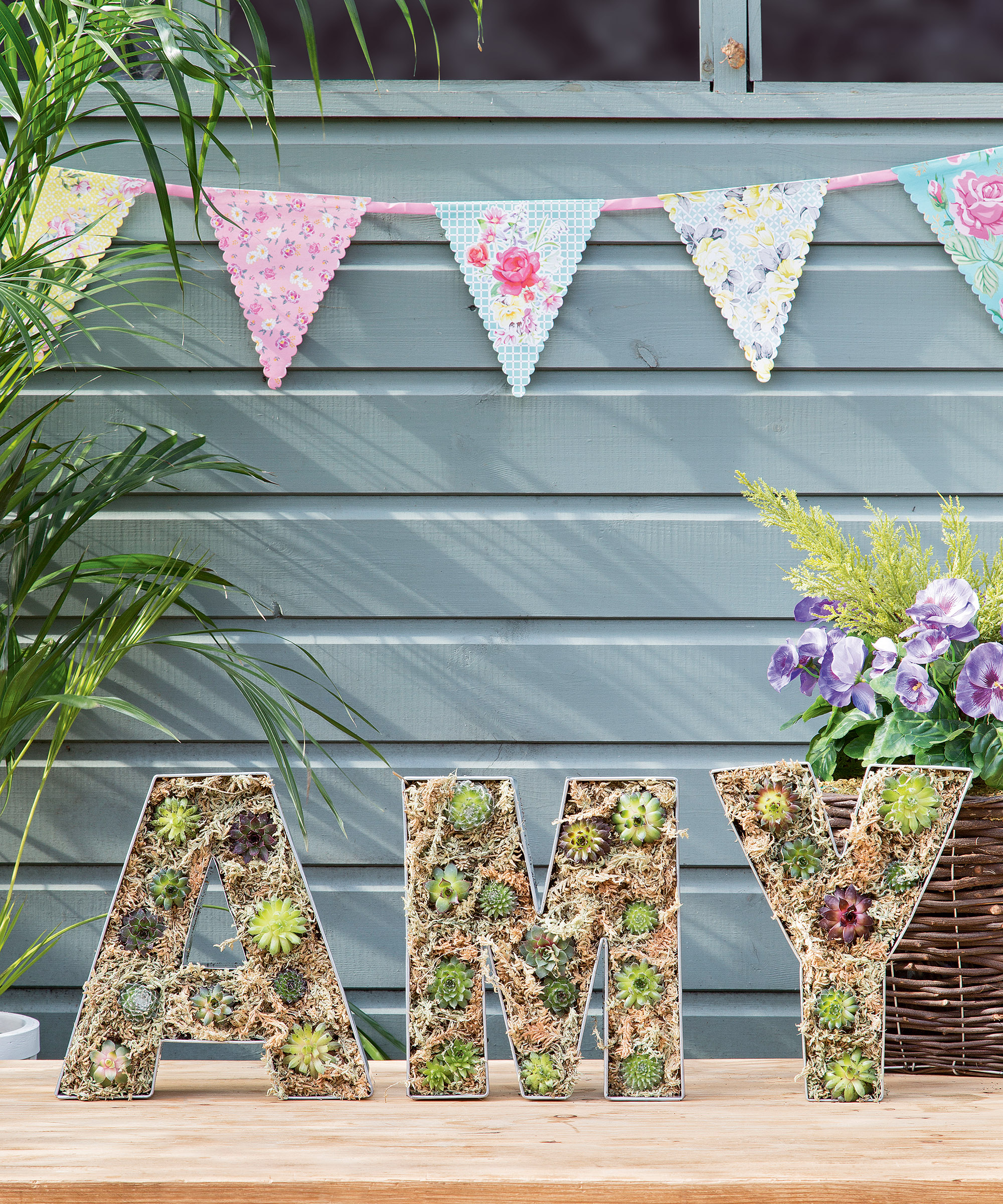
Use cake letter trays as planters for your succulents. Add drainage holes and fill each of the cake tins approximately three quarters with compost. Pat down so it’s compact. Decide how you’d like to arrange the plants in each tin and make a hole in the compost where each plant will sit.
Position and plant the succulents. Use moss to cover the compost in between the succulents by gently pushing it into place using your fingertips. Play around with the design until you are completely happy with the finished look of each tin. Stand up to display.
11. Incorporate succulents into hard landscaping
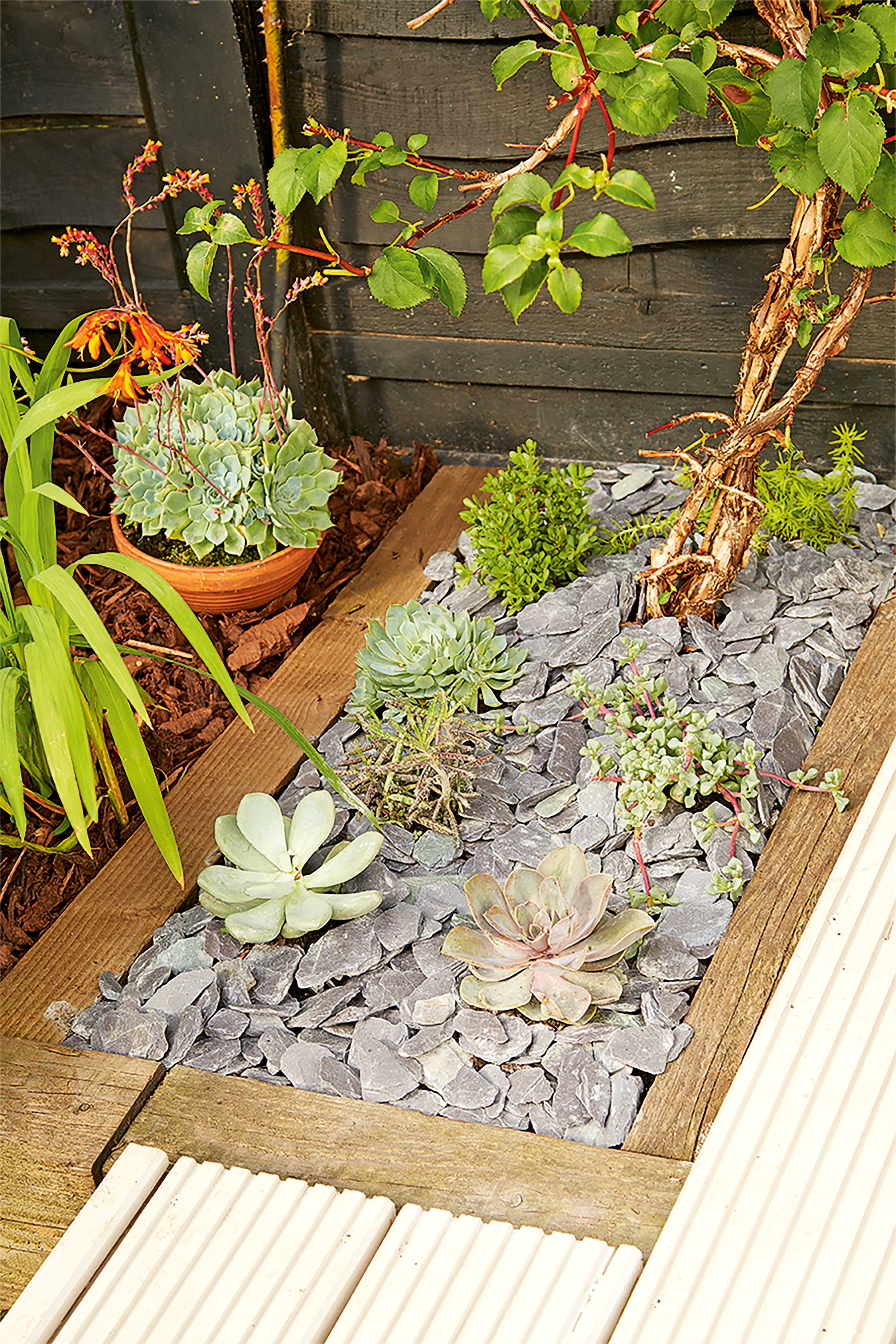
When you're planning on laying new decks or patio ideas, think about adding planting pockets to break up the hard landscaping. Succulents are the ideal plant for a sunny deck as once they've established it's possible to leave them for periods without watering them.
As they're quite low growing, and not easily spotted it's a good idea to grow them around the edges of your decked patio area to prevent them being trampled over. They don't need deep soil to grow, so just enough to cover their small root system, plus a bit more just to be on the safe side. Cover the soil with a layer of aggregate to give it a finished look.
An even easier way to incorporate succulent garden ideas into your landscaping is to go for a gravel patio. The succulents can simply be planted in slits in your weed proof membrane to grow up through your hardscaping material.
13. Frame a seating area

A sunny seating area is the ideal site for plenty of succulents, so make them part of your patio gardening ideas. Tap into your creative side by filling frames in fun and unique ways and attaching them to a wall or garden fence. Then, to add to the cohesion of your planting, use succulents to underplant your other container displays.
They make a good pairing with ornamental grasses, which are also low maintenance growers. Though needing little watering, succulents planted in containers will need moisture more frequently than those in our beds and borders. So keep an eye on the health of your plants and if the leaves start to look shrivelled make sure you up your watering.
Succulents have a contemporary feel so consider reflecting this aesthetic when choosing the best garden furniture for your scheme.
14. Arrange your plants to create unique color patterns
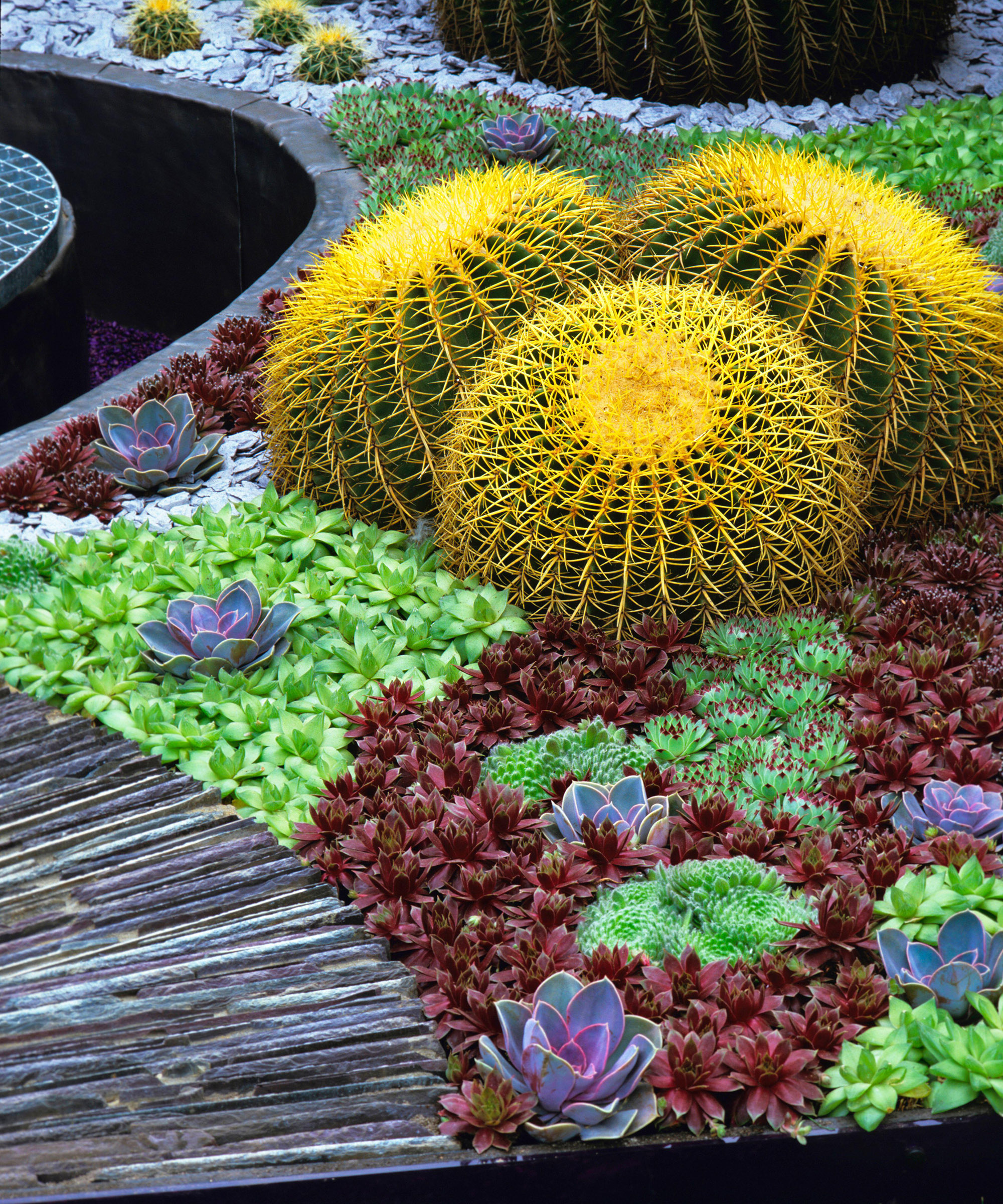
Succulents come in a fantastic range of colors, from bolds to neutral shades. Depending on your own taste you might consider arranging your succulent garden ideas by color, creating a fun patchwork-like pattern of clashing brights. For a more subtle look you could do a gradual color change for an ombre effect, starting with palest lilac to deepest maroon.
These can be done in spiral patterns to echo the natural leaf pattern of succulents, or in straight lines to suit modern garden ideas as it will give a more striking look that's ideal for contemporary aesthetics.
What is the best thing to plant succulents in?
Drought-tolerant succulents make great candidates for your hanging basket ideas. There’s no need to use water-retaining gel; instead, add some grit to the compost to improve drainage. Choose from hardy succulents like houseleeks (sempervivums) or more tender types such as echeveria.
Little plants such as Sedum and houseleeks (Sempervivum) will go nicely in alpine style troughs made of stone or terracotta. Whatever garden planter you choose, always ensure there's adequate drainage via drainage holes and the use of gritty compost.
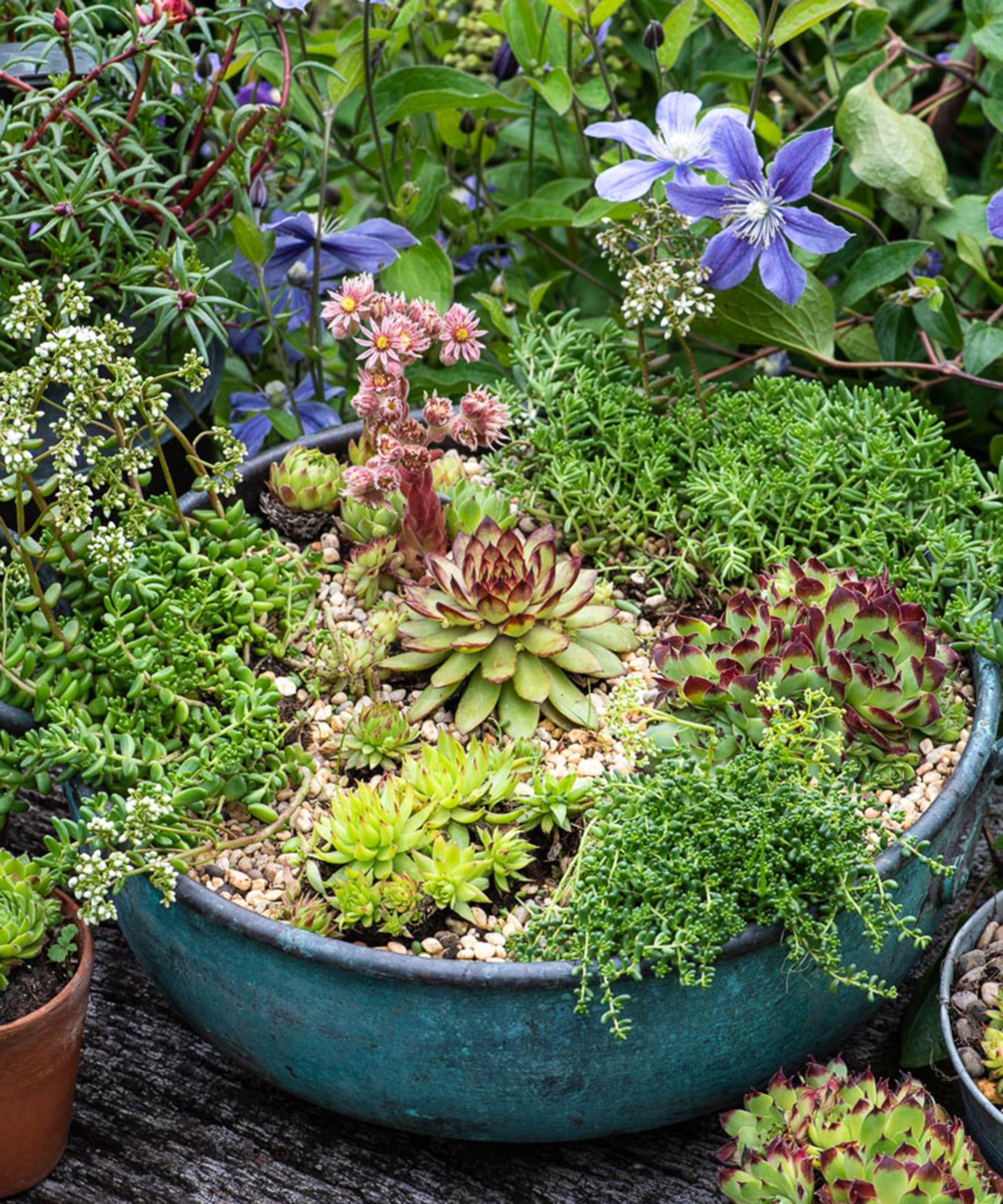
Do succulents need full sun?
The answer to this depends on the type of succulent. Most like bright sunny spots but there are some which hail from the rainforest, like a Christmas cactus, which will prefer dappled shade. The best thing to do is check plant labels before you buy for the ideal growing conditions for each type.
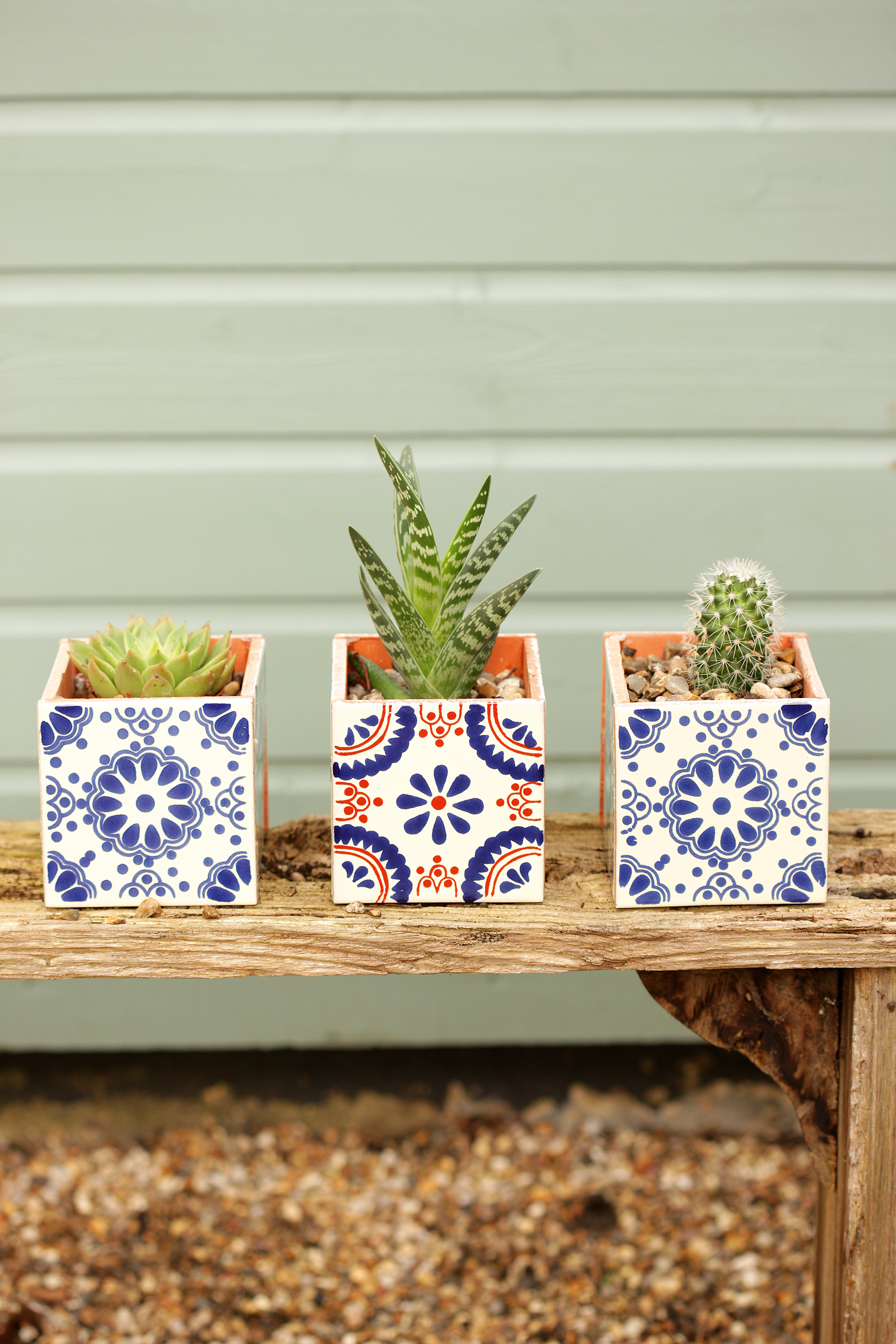
How do you layout a succulent garden?
First decide on the area that you are working with for your succulent garden ideas. Ideally, this should be somewhere which gets around six hours of sunlight every day. Enrich your soil with compost to ensure your plants will get off to a good start. The site must be free draining, so avoid or improve areas where water naturally sits, in particular, clay soils.
Next, choose plants which vary in size and texture and in colors which will complement one another. A loose stone or gravel layer around your plants will help to suppress weeds. If you're using garden gravel on top of your soil and your garden is on a sloping site, then you will need to build terracing into your layout.
Consider grouping boulders or large stones to add drama and interest to your space and your succulents can be planted in the cracks. Think about working in other drought tolerant plants for interest by growing ornamental grasses 'Stipa gigantea' and 'Stipa tenuissima'. The best ground cover plants like thyme can then weave in between the taller plants.
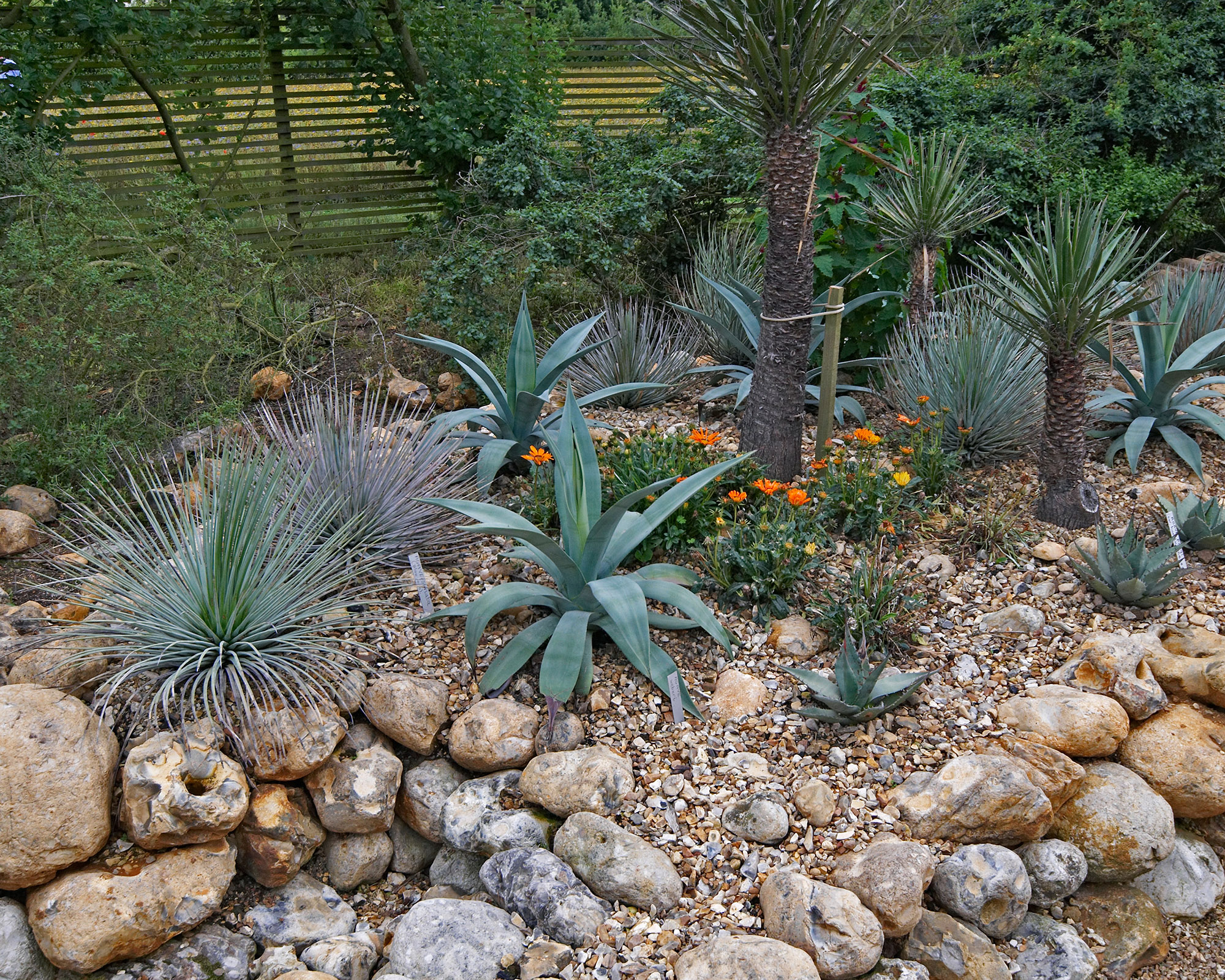

Teresa has worked as an Editor on a number of gardening magazines for three years now. So she is lucky enough to see and write about gardening across all sizes, budgets and abilities. She recently moved into her first home and the garden is a real project! Currently she is relishing planning her own design and planting schemes. What she is most passionate about when it comes to gardening are the positive effects it has on our mental health to grow and care for plants, as well as being great for the environment too and help provide food and shelter for wildlife.
